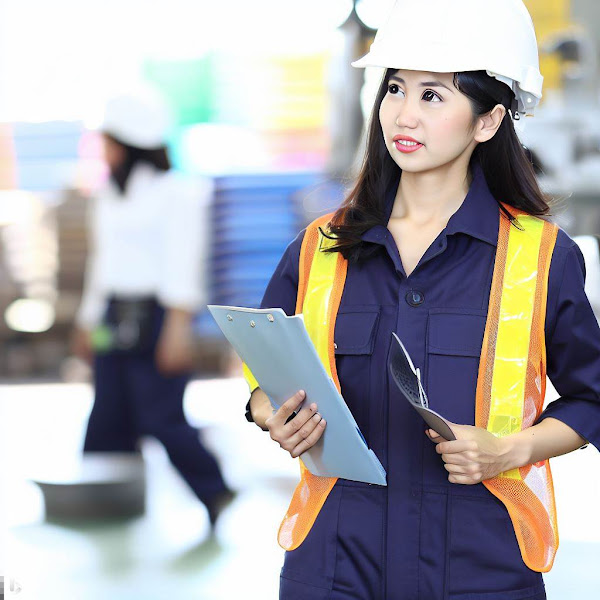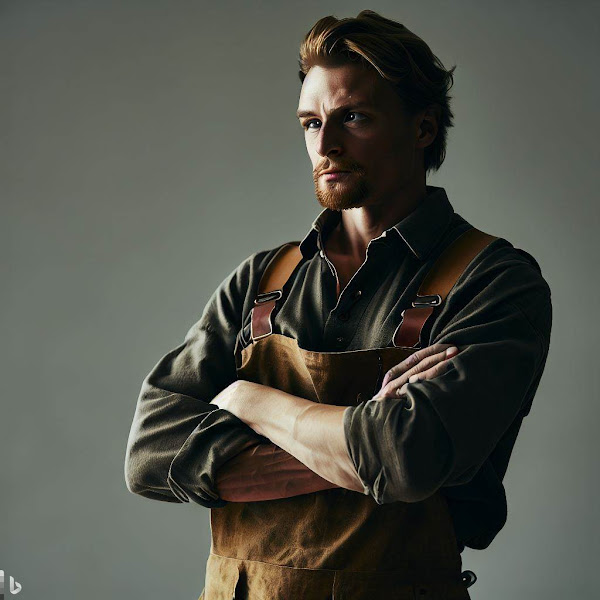In summary, women's workwear is similar to men's workwear but includes items specifically designed for women to provide a better fit and comfort. By choosing the right workwear, women can perform their jobs safely and comfortably, which ultimately leads to greater productivity and job satisfaction.
Also Read: Men Workwear
Women's work pants and overalls
Women's work pants and overalls are designed with a better fit for women's bodies, providing more room in the hips and thighs and a higher waistline for a comfortable fit. They are typically made from durable materials such as denim, canvas, or polyester and may have additional features such as reinforced knees or multiple pockets for storage.
Some of the specific design features of women's work pants and overalls may include:
- Stretch fabric: Many women's work pants and overalls are made with stretchy fabric to provide greater flexibility and ease of movement during physical work.
- Adjustable waistband: Some women's work pants and overalls have an adjustable waistband to ensure a comfortable fit for women with different body types.
- Higher waistline: Women's work pants and overalls often have a higher waistline than men's versions to accommodate women's curves and prevent gaping at the back.
- Roomier hips and thighs: Women's work pants and overalls are designed with more room in the hips and thighs to provide a comfortable fit and ease of movement.
- Multiple pockets: Many women's work pants and overalls have multiple pockets for the storage of tools and other work-related items.
When selecting women's work pants and overalls, it's important to consider the specific job requirements and safety regulations. Employers often have guidelines for what types of workwear are required in different work environments. It's also important to select the right size and fit to ensure comfort and ease of movement on the job. By choosing the right work pants and overalls, women can perform their jobs safely and comfortably, which ultimately leads to greater productivity and job satisfaction.
Women's work shirts
Women's work shirts are designed with a feminine cut and may have features such as stretchy fabric or ventilation to provide greater comfort during physical work. They are typically made from durable materials such as cotton or polyester and may have additional features such as reinforced elbows or multiple pockets for storage.
Some of the specific design features of women's work shirts may include:
- Tailored fit: Women's work shirts are tailored to fit women's bodies, with features such as a tapered waist and contoured seams for a more flattering and comfortable fit.
- Stretch fabric: Many women's work shirts are made with stretchy fabric to provide greater flexibility and ease of movement during physical work.
- Ventilation: Some women's work shirts have ventilation panels or mesh inserts to improve airflow and prevent overheating during physical work.
- Moisture-wicking: Many women's work shirts are made with moisture-wicking fabric to draw sweat away from the body and keep the wearer dry and comfortable.
- Multiple pockets: Some women's work shirts have multiple pockets for storage of tools and other work-related items.
When selecting women's work shirts, it's important to consider the specific job requirements and safety regulations. Employers often have guidelines for what types of workwear are required in different work environments. It's also important to select the right size and fit to ensure comfort and ease of movement on the job. By choosing the right work shirts, women can perform their jobs safely and comfortably, which ultimately leads to greater productivity and job satisfaction.
Women's work boots
Women's work boots are designed with a narrower fit and a smaller footbed than men's boots, providing better support for women's feet. They are typically made from durable materials such as leather or synthetic materials and may have additional features such as steel toes, slip-resistant soles, or waterproofing.
Some of the specific design features of women's work boots may include:
- Narrower fit: Women's work boots are designed to fit the narrower shape of women's feet, providing better support and comfort.
- Smaller footbed: Women's work boots have a smaller footbed than men's boots, providing a better fit and reducing the risk of foot injuries.
- Lightweight materials: Many women's work boots are made with lightweight materials to reduce fatigue during physical work.
- Arch support: Some women's work boots have arch support to prevent foot strain and provide greater comfort during extended periods of standing or walking.
- Breathable lining: Many women's work boots have a breathable lining to prevent foot odor and keep the feet cool and dry during physical work.
When selecting women's work boots, it's important to consider the specific job requirements and safety regulations. Employers often have guidelines for what types of workwear are required in different work environments. It's also important to select the right size and fit to ensure comfort and ease of movement on the job. By choosing the right work boots, women can perform their jobs safely and comfortably, which ultimately leads to greater productivity and job satisfaction.
Women's safety gear
Women's safety gear includes a variety of personal protective equipment (PPE) that is designed specifically for women. PPE is important to protect workers from hazards on the job, such as falling objects, sharp tools, chemicals, or extreme temperatures. Women's safety gear may include items such as hard hats, safety glasses, ear plugs, respirators, and gloves.
Some of the specific design features of women's safety gear may include:
- Smaller size: Women's safety gear is typically designed to fit the smaller size of women's bodies and heads. This can include smaller hard hats and safety glasses, as well as smaller-sized gloves and earplugs.
- Better fit: Women's safety gear is designed to fit the contours of women's bodies more closely and provide better protection. This can include adjustments to straps, padding, and other features for a more secure and comfortable fit.
- Feminine style: Some women's safety gear is designed with feminine colors and patterns, making it more visually appealing and increasing the likelihood that women will wear it.
- Lightweight materials: Many women's safety gear items are made with lightweight materials, which can reduce fatigue and improve comfort during long work shifts.
When selecting women's safety gear, it's important to consider the specific job requirements and safety regulations. Employers often have guidelines for what types of PPE are required in different work environments. It's also important to select the right size and fit to ensure proper protection and comfort on the job. By choosing the right safety gear, women can perform their jobs safely and comfortably, which ultimately leads to greater productivity and job satisfaction.
In conclusion
In conclusion, workwear and safety gear are essential for workers in many industries to protect themselves from hazards on the job and perform their duties safely and effectively. Women's workwear and safety gear are designed with specific features and considerations to provide a better fit and greater comfort for women in the workplace. When selecting women's workwear and safety gear, it's important to consider the specific job requirements and safety regulations and to choose items that provide the best fit, protection, and comfort for the job. By providing women with appropriate workwear and safety gear, employers can help create a safer and more inclusive workplace where all workers can perform their jobs to the best of their abilities.



